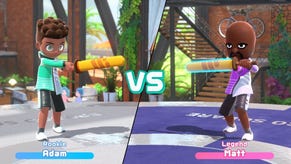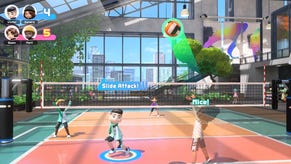DF Retro on Nintendo's motion-controlled Sports series - from 2006 to today
Does the Wii Sports magic still hold up in Nintendo Switch Sports?
Nintendo upended the video game industry in 2006 with the release of the Wii, a console that didn't even try to compete with the high-end power of Xbox 360 and PlayStation 3, instead concentrating on an immediately compelling concept: motion control. Sealing the deal was the inclusion of an irresistible pack-in game - Wii Sports -key in making the Wii a global phenomenon. Can Nintendo capture that magic again? Perhaps not, but the recent arrival of Nintendo Switch Sports is a fascinating release, a clear evolution in many ways, but not quite the finished article we might have hoped for.
When Nintendo launched the Switch in 2017, it was clear that it represented a different direction from the family focused Wii era. Due perhaps in part to the rise in mobile gaming, Nintendo clearly felt the need to shift back into the more traditional gaming space with Switch and, over the last five years, I'd say it has delivered on these promises. Look closely, though, and you'll still spot echoes of the Wii era - and that becomes more evident with the release of Nintendo Switch Sports. To understand what this game is all about, though, we need to look back to the year 2006 with the launch of Nintendo Wii.
This original Wii Sports was driven entirely by the capabilities of the Wiimote - the included controller with Wii. It was a new and innovative design which could support traditional gaming experiences while also offering something new with motion control. It uses a combination of a three-dimensional accelerometer, capable of detecting motion on three axes, and an optical sensor that works in conjunction with the sensor bar. For Wii Sports, the software has limited information on the position of your hand within a 3D space and mostly relies on the accelerometer to determine direction and speed of a motion.
However, it feels great in practice, and this is due to a combination of smart software tuning, a balanced, weighty controller design and the mix of vibration and sound from the internal speaker. Each of these elements is perfected designed to maximise the satisfaction of your swing which is why hitting that ball in Tennis feels as good as it does. This is the baseline experience for Wii Sports - a game that is otherwise fairly limited in terms of its visuals, relying on a stylized design that's easy to render and allows for a completely locked 60fps from start to finish.
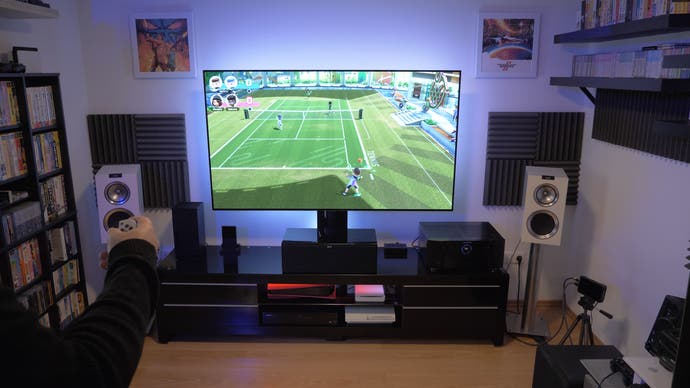
This was followed up later with Wii Sports Resort, its release coinciding with enhanced functionality in the form of the Wii Motion Plus - a small dongle that attaches to a Wiimote or, later, integrated within an upgraded Wiimote. This was created to solve the problem many people had with motion control up to this point: proper hand tracking. The Wiimote could detect movement but not actually track position.
To solve this, Nintendo worked with InvenSense who provided a multi-axis Micro-Electro-Mechanical Systems gyroscope, allowing Wiimote to be fully tracked in 3D space, opening the door to concepts like swinging a sword/light saber. Wii Sports Resort even included the Motion Plus add-on in the box.
This sequel offered 12 different sports each with unique variations within - it's an impressive package with a great vibe but, at the same time, it never felt quite as immediate or appealing as the original Wii Sports, even though events like table tennis demonstrated the increased accuracy of Motion Plus. Meanwhile, games like archery showed how the Wiimote and the nunchuk could effectively simulate holding a bow, pulling back the string and shooting an arrow - a highly satisfactory mechanic. Ultimately, despite the return of golf and bowling from the original Wii Sports, Resort isn't as focused as the original and lacks the high score chasing thrill - it's an accomplished sequel but a footnote in Nintendo's history where its predecessor looms so large.
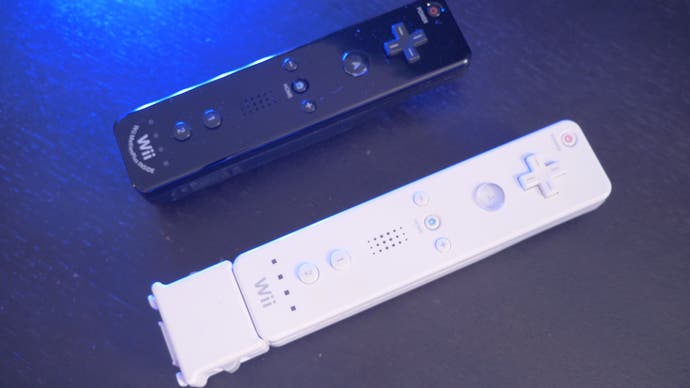
The same could be said for Wii Sports Club on the ill-fated Wii U, effectively a 2014 HD remake of the original with support for Wii Motion Plus controllers, along with some interesting gamepad functions. Alas, it had little impact on Nintendo's fortunes - the Wii U simply hadn't managed to garner much attention and these remakes of the original Wii Sports games felt drab with washed out colour schemes.
It is interesting, however, in that it demonstrates to me at least that the addition of a Gyroscope is perhaps less important than one might have first guessed. The extra precision does add some nuance to the games, but I would argue that the originals on Wii still managed to feel better overall. Also, by 2014, the whole 'waggle' control concept was becoming somewhat long in the tooth.
All of which brings us up to the present day, the hyper-successful Nintendo Switch and the firm's latest attempt to bring back the Wii Sports magic. It's interesting to note that the Switch's Joy-Cons retained most of the features Nintendo had introduced on Wii, it just wasn't the focus anyone. Much like the d-pad and analogue stick before it, Nintendo had standardised motion control, but it was 1-2 Switch that showcased the features, not a Sports title - until now.
Does the concept still hold up? I'd say it does, perhaps even better than expected - and the selection of games is fascinating, with three games focused on bouncing a ball back and forth, the return of sword fighting from Resort, the classic bowling and the new addition of football or soccer, if you will. The selection itself is fine but it feels a little more barebones than I might have expected and lacks the high score chasing fun of the original Wii Sports once again. The available options for each game are extremely limited and the finer points aren't well communicated.
Integrating the Sports experience into a very different console also presents interesting challenges. The game is designed to run in TV mode, but portable play is available, at least to some extent. And this is key if you're using Switch Lite - you cannot use the built-in controls at all. This makes sense as you wouldn't want to swing your Lite around and to play the game, you'll need to pair the Joy-Con with your console and, if you are using the Lite, keep in mind that it lacks the kickstand feature meaning you'd need to play it lying flat on the table. So, while it is technically playable this way, it's not really recommended.
Furthermore, in portable mode on all Switch consoles, you can only engage in single player or online mode - same system, split-screen multiplayer is not available. I'm wondering if this is less due to the form factor and more due to split screen. Multiplayer mode relies on this and it's entirely possible that it might not have been feasible at 60fps in portable mode - just a guess, but it seems likely. The Joy-Cons themselves are about as full functioned as a Wiimote with Motion Plus. It lacks the IR camera and internal speaker but it's otherwise the same.
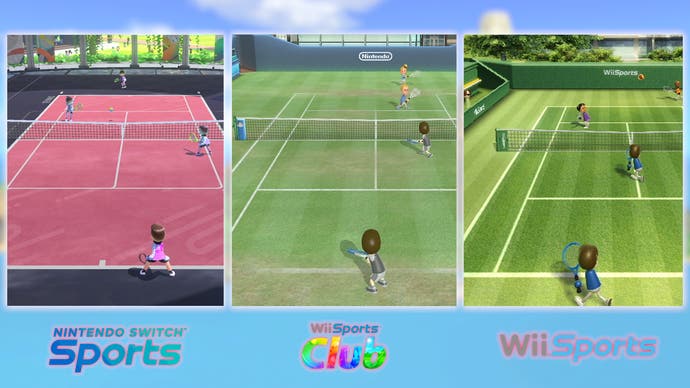
However, while it plays well overall, there are two things to consider. Firstly, the small size of the Joy-Con means that games like Tennis don't feel quite as satisfying to play. The shape and weight of a Wiimote makes it a great analogue for a tennis racket - the Joy-Con don't get offer the same satisfaction though it's still adequate. Secondly, depending on distance from my Switch, I found that there were sometimes connectivity issues. In some cases, the Joy-Con would disconnect completely mid-game whle in other places, the motion felt jerky, not matching my hand as if it were encountering interference. With those caveats out of the way, however, the overall experience is positive, and it does successfully capture the experience of Wii Sports, which is key here.
There are also some cute new features - the new football game, for instance, has different modes of play. The main mode relies on analogue stick input and right stick camera control like a traditional game while using motion control to kick the ball. It feels like a slower paced Rocket League, in some ways, but it feels surprisingly fun and satisfying. There's another mode involving shooting goals, however, and this asks you to use the leg strap which I believe is included in the retail version or with Ring Fit Adventure. Place the left Joy-Con in the strap and now it responds to your kicks - it's fun enough that I wish it had been expanded on.
In other modes, though, I did feel that perhaps the game was tuned in such a way as to feel less satisfying. Bowling in the original Wii Sports requires a lot of nuance in how you fling the controller but, on Switch, I found it far too easy to get a strike or spare - it never felt as if it needed the same level of precision despite the controller itself being more precise. Furthermore, in the past, you had the option to let go of the b-button on the underside of the Wiimote when rolling the bowling ball down the lane. That feels very natural, I think - on Switch, this option is removed, and you simply leave your finger on the trigger the entire time. It seems minor but it contributes to the feeling that bowling just isn't as enjoyable as it was in the original.
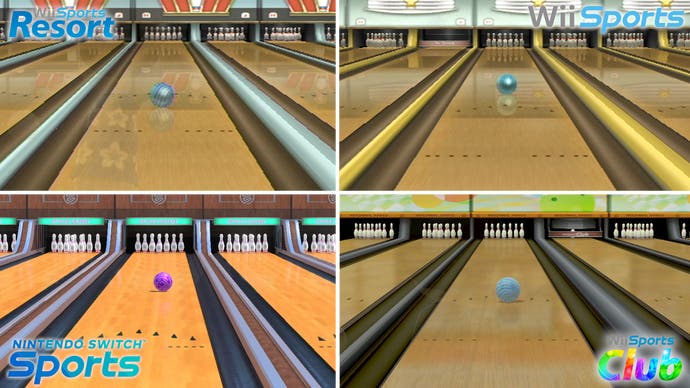
Where Nintendo Switch Sports stays true to its roots is in terms of presentation. This title isn't designed as a technical powerhouse, but it does offer a slick, clean visual design and smooth performance. Despite the small scale of the game, however, I was surprised to find that the resolution targets were slightly conservative. When docked, the game seems to run with a resolution of 1600x900 most of the time - there is some mild dynamic resolution scaling. In portable mode, however, it's far more variable ranging from an upper point of 720p native down to 576p or thereabouts. It seems look best during actual gameplay with bouts of lower resolution appearing during replays or pre-match flyovers.
Thankfully, there's very little to say about the game's performance - during gameplay and replays, it's 60 frames per second and feels extremely stable even in two-player split-screen mode. The same is true of portable mode, by the way, though portable does not allow split-screen.
The evolution in visual style is interesting and represents the first shift in the Sports franchise. Until this game, Nintendo leaned heavily on the Mii system combined with simple backgrounds. Nintendo Switch Sports delivers something that feels like a cross between Splatoon and Kinect era Xbox avatars.The new avatar system is somewhat of a letdown, however. Miis allowed for endless customization but the avatar system here is extremely limited with just a handful of face types to choose from while leaning on unlockable accessories to enhance your character. Weirdly enough, you can create a Mii on your Switch and use the Mii head within Switch Sports. There's a style clash when doing so, I might argue, but at least it's an option.
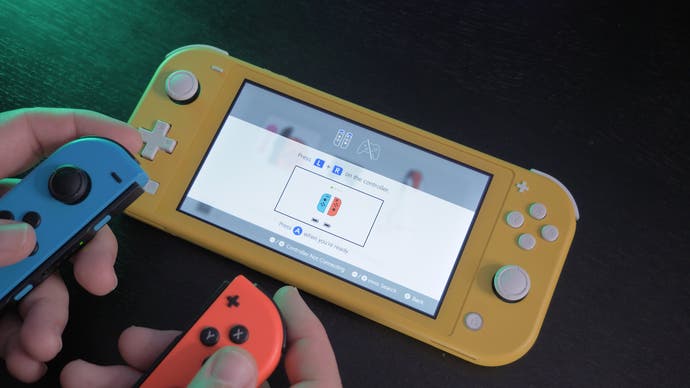
But really, that's pretty much the state of Switch Sports in its current form - after spending more time with it, my thoughts are mixed. On one hand, the basic concept remains as engaging now as it ever was - there's still something very satisfying about hitting a ball back and forth via motion control. It's so simple on paper but Nintendo's careful tuning helps create something that is fun. At the same time, I feel that the single player aspect could have been fleshed out further - compared to something like Wii Sports Resort, there just isn't as much to do here unless you have friends over. Online multiplayer is available, but due to the way this system is designed, it's not always easy to differentiate a real person from an AI opponent. As a result, it never really feels all that different whether you're playing against real opponents or the AI.
Ultimately, Switch Sports is a good but non-essential continuation of the Nintendo Sports legacy - a marked improvement over the Wii U entry but lacking in features. However, that legacy cannot be denied - the release of Wii Sports was an important moment for the games industry whether you were into the idea or not. It built a new audience and would help shape future technologies. The success of the Wii influenced the research and development of motion tracking solutions to be used with video games, eventually leading to things like full hand track for VR. In that sense, I feel that motion control is in a good place - it's no longer shoehorned into games as a gimmick - it's mostly used for specific game types of experiences in ways that make sense. Like so many ideas before it, Nintendo was there at the ground level.
And revisiting the original Wii Sports, it's still a magical game, evoking feelings its sequels have failed to match. And that includes Nintendo Switch Sports. Maybe it's the original game design that hasn't been surpassed, maybe it's the motion-controlled focus and form-factor of the Wiimote itself that makes the difference. However, what's clear is that times have moved on and perhaps a singular focus on tightly designed motion control experiences isn't quite enough in the modern era. Ironically, it seems that Nintendo itself understands this - Ring Fit Adventure has a full world map with different stages and even a narrative while even Wii Sports Resort tried harder to do something new. Nintendo Switch Sports is a throwback to past glories but as fun as it is, the original Wii magic isn't quite there.








